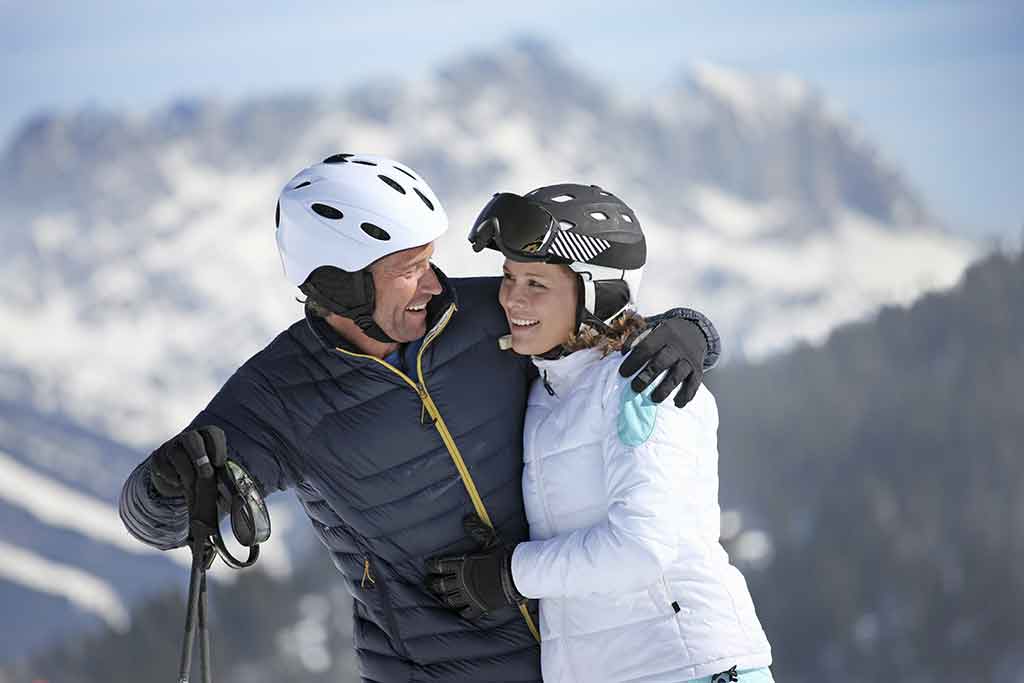Welcome
to Sauze d'Oulx Italy. If you’are planning to visit Sauze d'Oulx for your next trip and you are
looking for the best places to visit, here you’ll find tips and suggestions of most
popular point of interest and activities not to be missed in Sauze d'Oulx and surrounding.
Travelers will appreciate this italian town with
his rich historical and artistic heritage, local culture and environment. Discover the monuments, buildings, natural
treasures and all the details that characterize Sauze d'Oulx and its territory. Share and suggest a place you've
visited.

Skiing couple in Sauze d'Oulx
It is the second pole of the Milky Way circuit after Sestriere. The Milky Way in Alta Val di Susa, is the international ski area consisting of five Piedmontese resorts and a French one: Cesana, < em> Claviere, Sansicario, Sauze d'Oulx, Sestriere and Montgen & amp; egrave; vre. A city very rich in ski resorts, Sauze D'Oulx was home to the Winter Olympics in 2006 with the races in the Freestyle specialty. This is an acrobatic descent with aerial evolutions along a steep track. You use very short skis and you can do two jumping and humps specialties. In the latter, athletes compete on two parallel tracks that end up in a single arrival area. At the finish line the judges assign a score to each athlete.
To reach Sauze d'Oulx by car coming from Turin, you need to take about 83 km on the A32 Turin-Bardonecchia-Frejus motorway and exit at the Oulx tollbooth. Then continue for Sauze d'Oulx. Alternatively, you can choose the S.S. 24 of the Montgenevre. Using the Turin-Bardonecchia railway line you need to get off at Oulx station and then continue with the bus to Sauze d'Oulx.If instead you arrive at the Turin airport Caselle can be reached Sauze d'Oulx by train or car along the A32 motorway following the signs above.
The Sauze d'Oulx area, which starts at 1509 meters above sea level, is very well stocked with ski lifts, offers over 140 slopes, all connected to each other ( pass from one to the other without ever taking the skis off the feet): 11 chairlifts and 11 ski lifts, 400 km of slopes and 92 lifts ranging from 1350 to 2800 meters for skiing on numerous downhill and cross-country tracks. Sauze d'Oulx is animated not only in winter, but also in summer. Thanks to the numerous and well-prepared walking trails you can admire the splendid views of the mountains and woods.
written by Ralph Christie - Last update: 31/10/2021
This guide has been translated automatically through a third party service. Visititaly offers these automatic translations to help site visitors, however the automatic translations may contain inaccuracies, errors or inaccuracies. You can contact us to report inaccuracies or errors and we will check the translation.